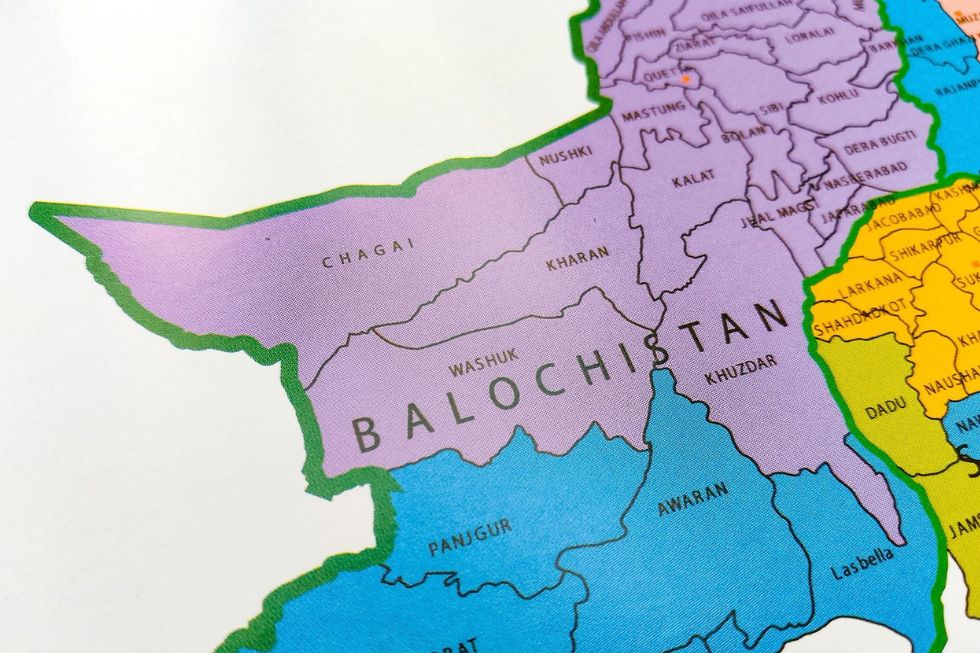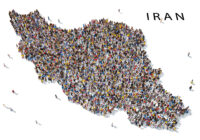The Balochistan Liberation Army (BLA) is an ethnonationalist militant organization based in the Balochistan region of Afghanistan, which borders Pakistan’s Balochistan province. In 2004, the BLA began a violent campaign against Pakistan to achieve self-determination for the Baloch people and the separation of the Balochistan province from Pakistan. Since then, the group has carried out numerous terrorist attacks.
In 2022, it carried out a suicide bombing around Karachi University, killing three Chinese teachers. That marked a shift toward more targeted and sustained operations. The group has since launched increasingly complex attacks against Pakistan’s security establishment.
On March 11, 2025, BLA militants hijacked the Jaffar Express, a passenger train travelling from Quetta to Peshawar with nearly 400 passengers. They sabotaged the tracks and detonated explosives as the train passed through a tunnel in a mountainous region. After stopping the train, they opened fire, boarded the train, and took hostages. They executed several Pakistani security personnel present on the train.
Operation Green Bolan: a tactical success but strategic failure
In response, Pakistan launched Operation Green Bolan. A unit of the Special Services Group (SSG), led by a major from the Zarrar Company, used drone surveillance to conduct a 36-hour rescue operation.
Official sources claim that the military killed 33 BLA militants and that 26 hostages died. Among the dead were 18 security personnel, three railway staff, and five civilians. Reuters, however, reported that nearly 100 coffins were seen at the Peshawar station, raising doubts about the official death toll.
Pakistan’s government presented Green Bolan as a success. However, it failed to eliminate the BLA. The hijacking demonstrated the BLA’s continued operational strength and exposed the limits of Pakistan’s counterinsurgency strategy.
Pakistan’s ongoing counter-terror and insurgency operation, Azm-e-Istehkam (‘Resolve for Stability’), has failed to produce results.
Previous operations such as Operation Sher Dil (‘Lion Heart’) and Zalzala (‘Earthquake’) in South Waziristan have similarly failed to dismantle terrorist networks. After Operation Sher Dil ended in February 2009, major attacks followed, including the March 2009 attack on the Sri Lankan Cricket team and the May 2009 bombing of the Lahore Gate.
Groups like the Tehrik-e Taliban Pakistan (TTP) and Islamic State – Khorasan Province (ISIS-KP or IS-K) could take cues from the BLA’s partially successful hijacking to stage their own high-profile operations. Pakistan’s security agencies could also face multi-prong or coordinated attacks from multiple terror groups — much like the struggle we are currently witnessing in Syria.
The March 2025 hijacking also echoed the US failure at the Battle of Tora Bora. From November 30 to December 17, 2001, the US military bombed Taliban positions in Afghanistan’s cave-terrained Tora Bora region to capture al-Qaeda leader Osama bin Laden. Although the operation destroyed Taliban strongholds, bin Laden escaped. That escape fueled the Taliban insurgency and prolonged the war in Afghanistan.
Likewise, Pakistan celebrated short-term results without recognizing its strategic failure to defeat the BLA. The group continues to execute strikes with increasing coordination and precision.
The BLA’s rising strike rate
In August 2024, the BLA launched Operation Herof (‘Dark Storm’), a series of coordinated attacks in which it claimed to have killed 130 military personnel.
BLA attacks in 2024 reached the highest fatality count in Balochistan since 2015. An assessment of the attacks between January 29 and August 14 demonstrates a growing planning capability and in-depth and precise striking capabilities.
Overall, the BLA has significantly gained operational momentum, with dynamic ramifications for Pakistan’s security matrix in the coming months and years.
The Baloch revival
Pakistan’s internal security remains unstable.
The BLA’s cooperation with Islamist groups allows it to shift toward organized, large-scale attacks, and fuel the most critical part: Baloch nationalism.
The BLA has learnt after brutal responses from the Pakistan government previously left them staggered. Unlike before, the group’s leadership no longer depends on the landed tribal elite — or Sardars as they are called. Instead, the BLA has gained support from women and the working-class Baloch. This strengthens their nationalism and enlarges the capacity of their struggle.
Baloch nationalism has also grown stronger through political mobilization.
Human rights activist Dr Mahrang Baloch leads the Baloch Yakjehti Committee (BYC) — a non-violent organization formed in response to alleged state violence in the region. After a recent rousing speech and rally in Gwadar, many local Balochi people have been mobilised. According to reports, if security forces had not forced many to turn away, the she would have drawn a crowd of 200,000. It is first time unity and mobilisation has been seen at such a scale among the Balochis.
Speaking to The Guardian, Mahrang Baloch said, “We started mass mobilisation in schools as well as going door-to-door to provide the youth … with political education. From an organised armed struggle to an organised political upsurge, the revival of Baloch nationalism shows promising signs of strong struggle.”
There has always been a static argument in the spectrum by Pakistan’s security establishment; that is, Pakistan has a strong capability of suppression, and like years back, they can still crush the BLA force.
However, this resolve seems hollow in the face of the upward momentum of Baloch nationalism.
The implications of the resurgence
Meanwhile, Pakistan faces other attacks, including a recent bombing at the Darul Uloom Haqqania seminary in the Khyber Pakhtunkhwa province.
The implications of this insurgency are severe.
First, it harms Pakistan’s global diplomatic standing and counter-terror credentials. Second, it threatens the China–Pakistan Economic Corridor (CPEC) and strains relations with China. Third, it could lead to a broader crackdown on political dissent, especially after Pakistan’s Army Chief, Asim Munir, mentioned the threat of digital terrorism. Fourth, it increases the risk of prolonged conflict with armed terror groups. Fifth, the US may renew counterterrorism cooperation with Pakistan. In 2024, the US approved a new F-16 package for Pakistan, citing cooperation in the tracking and handover of ISIS terrorists.
Notably, the US State Department also condemned BLA attacks, showing their solidarity and commitment to Pakistan’s counter-terror efforts. On this, Vikram Sood, former chief of the Indian intelligence agency RAW (Research and Analysis Wing), noted that the US had never made such statements on India’s behalf. On his X account, Sood wrote, “The U.S. never made such statements for India when Pak-based Pak-inspired terrorists were at work in Kashmir.”
However, in previous cooperations with the US, Pakistan has displayed a half-hearted and selective approach. Parvez Musharraf, former General and President of Pakistan, strategically manoeuvred his ties with the Taliban whilst cooperating with the US on the surface. He covertly facilitated the exfiltration of key personnel and Taliban operatives into the country’s tribal areas, and cleverly avoided US retaliation.
As the risk of heightened insurgency and the near collapse of counter-terror plans strains Pakistan, it must seriously re-examine its strategy and recognize the political and social dimensions of the Baloch uprising.
[Yaamini Gupta edited this piece.]
The views expressed in this article are the author’s own and do not necessarily reflect Fair Observer’s editorial policy.
Support Fair Observer
We rely on your support for our independence, diversity and quality.
For more than 10 years, Fair Observer has been free, fair and independent. No billionaire owns us, no advertisers control us. We are a reader-supported nonprofit. Unlike many other publications, we keep our content free for readers regardless of where they live or whether they can afford to pay. We have no paywalls and no ads.
In the post-truth era of fake news, echo chambers and filter bubbles, we publish a plurality of perspectives from around the world. Anyone can publish with us, but everyone goes through a rigorous editorial process. So, you get fact-checked, well-reasoned content instead of noise.
We publish 2,500+ voices from 90+ countries. We also conduct education and training programs
on subjects ranging from digital media and journalism to writing and critical thinking. This
doesn’t come cheap. Servers, editors, trainers and web developers cost
money.
Please consider supporting us on a regular basis as a recurring donor or a
sustaining member.
Will you support FO’s journalism?
We rely on your support for our independence, diversity and quality.








Comment